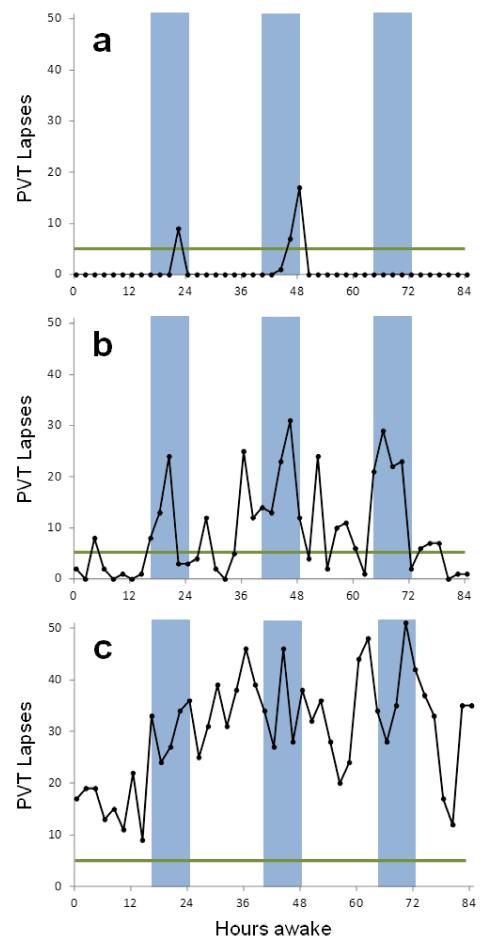Figure 3.
Inter-individual differences in the vulnerability to sleep loss (unpublished data from David F. Dinges). The three male subjects in panels a-c performed a 10-minute psychomotor vigilance test (PVT) every 2 hours during an 88-h period of acute total sleep deprivation. The green horizontal line reflects 5 lapses (RTs ≥ 500 ms), and the blue bars indicate the period from 0000h to 0800h each day for deprivation. (a) This subject demonstrated a type 1 response, indicative of resilience to the effects of sleep loss. He had PVT lapses above baseline during only three test bouts in the period between 0600h-0800h near 24 h and 48 h awake. (b) This subject was somewhat vulnerable to the effects of total sleep deprivation (type 2 response), with more lapses during the night, but substantial improvement of PVT performance during the daytime (i.e., circadian rescue). (c) This subject was very vulnerable to the effects of sleep loss (type 3 response). PVT lapses were evident early in deprivation (which began for all subjects after a final baseline night of 8 h sleep disrupted by blood draws from an indwelling venous catheter every 1.5 h). As deprivation continued into the first night, his lapse rates escalated to very high levels, never returning to baseline levels. These inter-individual differences in vulnerability to sleep deprivation on a sensitive vigilant attention task were not accounted for by demographic factors, IQ or sleep need. Other studies of large numbers of healthy adults studied during chronic partial sleep deprivation also reveal systematic inter-individual differences in neurobehavioral vulnerability to sleep loss that have thus far have not been found to be predictable with psychometric scales [50].

